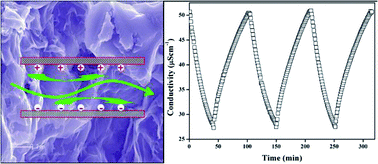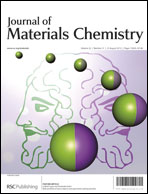In this paper, reduced graphene oxide (RGO) and activated carbon (AC) composites (GAC) have been synthesized by a facile chemical method for the capacitive removal of salt ions from brackish water. The as-prepared composites have been characterized by scanning electron microscopy, N2 adsorption–desorption and cyclic voltammetry. The GAC composite with 20 wt% graphene (GAC-20) exhibits the best electrochemical performance among all the samples, with a specific capacitance of 181 F g−1. The electrosorption capacity of the GAC-20 electrode is found to be much higher than that of the AC electrode, indicating that RGO can serve as a flexible bridge to form a “plane-to-point” (RGO-to-AC) conducting network, which is beneficial for decreasing the aggregation of AC particles, and improves the electron transfer within the composite electrode. GAC composite should be a promising candidate as an electrode material for capacitive deionization (CDI) applications.
You have access to this article
 Please wait while we load your content...
Something went wrong. Try again?
Please wait while we load your content...
Something went wrong. Try again?


 Please wait while we load your content...
Please wait while we load your content...